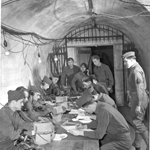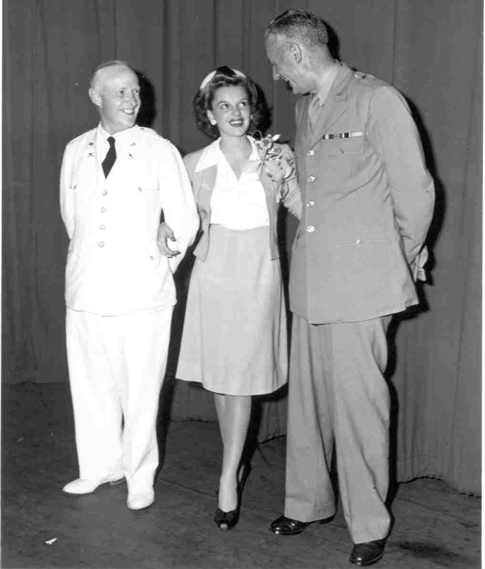
NPS/Gateway NRA Museum Collection Fort Hancock was a bustling post in World War II with an average population from 7,000-12,000 soldiers. To house, feed, and entertain these troops, hundreds of temporary buildings were constructed. Brigadier General Philip S. Gage became Fort Hancock's first general and was assigned to the Fort from 1940-1944. He first served as Fort Hancock's commanding officer and the commander of the Harbor Defenses of Sandy Hook and later, the Headquarters Harbor Defenses of New York (HDNY). Brigadier General Charles Ostrom replaced Gage and was stationed at Fort Hancock from 1944 to 1950. The Harbor Defenses were headquartered in the former Mortar Battery, known as the "Bombproof." Units assigned to Fort Hancock during the war years included the 245th, 265th, 52nd (railway), 7th and 5th (mine defenses) Coast Artillery. In addition, the 113th Infantry, 119th Medical Regiment and the 1225th Army Service Unit were assigned to the post. In 1943, Fort Hancock received a detachment of members of the Women's Army Corps. Assigned to the 1225th Army Service Unit, these women worked in the motor pool and in administrative support roles. Entertainment for the troops included movies and live performances at two theaters, a Service Club, YMCA, NCO Club, Officers' Club, ocean bathing, and recreation buildings. Fort Hancock's population swelled in 1945 as the Post became a reception center for troops returning from Europe. At war's end a U.S. Disciplinary Barracks (USDB) for U.S. soldiers who committed crimes in Europe was opened in Camp Low (Horseshoe Cove). This prison began operation on August 1, 1945 and closed in 1950. Click here, to learn more about this time at Fort Hancock by reading oral history interviews. 
NPS/Gateway NRA Museum Collection. |
Last updated: February 26, 2015
